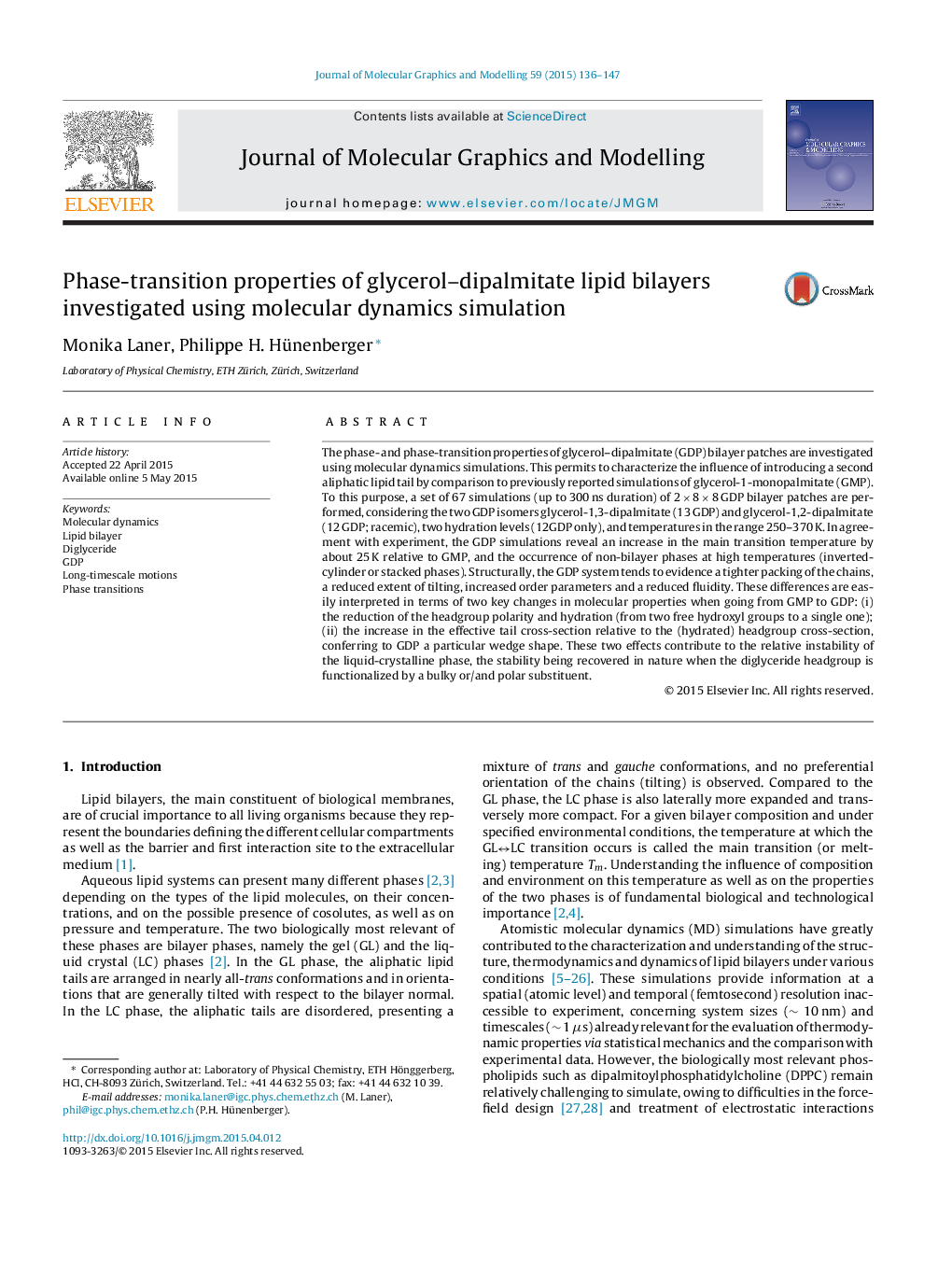| Article ID | Journal | Published Year | Pages | File Type |
|---|---|---|---|---|
| 443293 | Journal of Molecular Graphics and Modelling | 2015 | 12 Pages |
•We investigate the phase- and phase-transition properties of glycerol–dipalmitate lipid bilayers.•In agreement with experiment, the simulations reveal an increase in the main transition temperature relative to glycerol monopalmitate.•We also observe a tighter packing of the chains, a reduced extent of tilting, increased order parameters and a reduced fluidity.•This is likely due to the reduction of the headgroup polarity and the increase in the tail relative to headgroup cross-section.
The phase- and phase-transition properties of glycerol–dipalmitate (GDP) bilayer patches are investigated using molecular dynamics simulations. This permits to characterize the influence of introducing a second aliphatic lipid tail by comparison to previously reported simulations of glycerol-1-monopalmitate (GMP). To this purpose, a set of 67 simulations (up to 300 ns duration) of 2 × 8 × 8 GDP bilayer patches are performed, considering the two GDP isomers glycerol-1,3-dipalmitate (13 GDP) and glycerol-1,2-dipalmitate (12 GDP; racemic), two hydration levels (12GDP only), and temperatures in the range 250–370 K. In agreement with experiment, the GDP simulations reveal an increase in the main transition temperature by about 25 K relative to GMP, and the occurrence of non-bilayer phases at high temperatures (inverted-cylinder or stacked phases). Structurally, the GDP system tends to evidence a tighter packing of the chains, a reduced extent of tilting, increased order parameters and a reduced fluidity. These differences are easily interpreted in terms of two key changes in molecular properties when going from GMP to GDP: (i) the reduction of the headgroup polarity and hydration (from two free hydroxyl groups to a single one); (ii) the increase in the effective tail cross-section relative to the (hydrated) headgroup cross-section, conferring to GDP a particular wedge shape. These two effects contribute to the relative instability of the liquid-crystalline phase, the stability being recovered in nature when the diglyceride headgroup is functionalized by a bulky or/and polar substituent.
Graphical abstractFigure optionsDownload full-size imageDownload high-quality image (448 K)Download as PowerPoint slide
